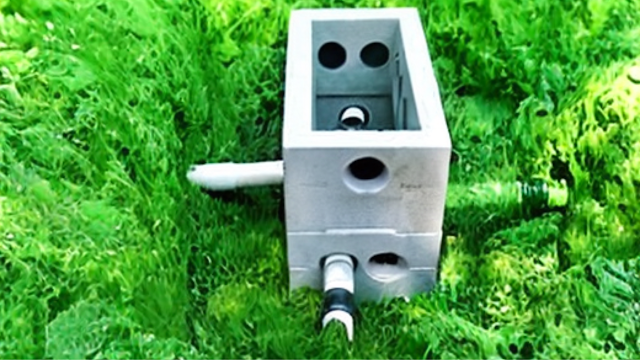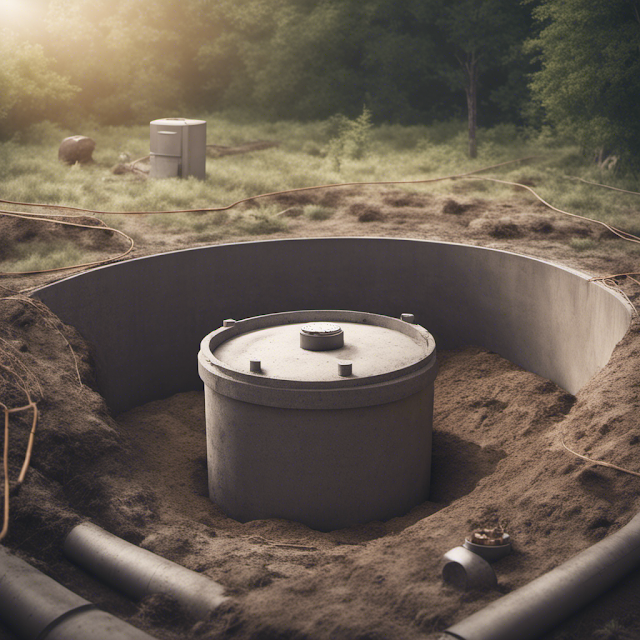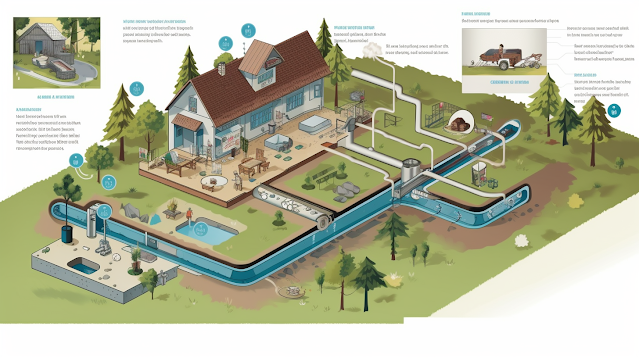Old Septic Tank Design
 |
| Old Septic Tank Design |
Introduction
Are you curious about the history of old septic tank designs?
In this article, we will explore the components, functioning, and limitations of these outdated systems.
Additionally, we will delve into their environmental impact and introduce you to modern alternatives.
By understanding the flaws of old septic tank designs, you can make informed decisions about upgrading your own system.
Let's dive into the fascinating world of old septic tank design.
Historical Background of Old Septic Tank Designs
As you delve into the historical background of old septic tank designs, you'll discover several key developments that have shaped their evolution over time.
In the early days, septic tanks were simple, single-chamber structures made of concrete or brick. However, as the need for effective wastewater treatment increased, engineers began experimenting with different designs.
One major development was the introduction of the two-chamber septic tank in the mid-20th century. This design allowed for better separation of solids and liquids, leading to improved treatment efficiency.
Another significant advancement was the incorporation of a distribution box, which evenly distributed effluent into the drain field.
These developments laid the foundation for the modern septic tank systems we have today.
Now, let's explore the components and structure of old septic tank designs.
Components and Structure of Old Septic Tank Designs
You should understand the two main components and the overall structure of old septic tank designs.
The first component is the tank itself, which is typically made of concrete or steel. It's designed to hold all the wastewater that flows into it.
The second component is the drainage field, also known as the leach field. This field consists of a series of perforated pipes buried in gravel-filled trenches. The purpose of the drainage field is to distribute the treated wastewater into the surrounding soil, allowing it to be further filtered and purified.
The overall structure of an old septic tank design includes an inlet pipe, which allows wastewater to enter the tank, and an outlet pipe, which carries the treated wastewater to the drainage field.
Understanding these components and structure is crucial to understanding the functioning and operation of old septic tank designs.
Functioning and Operation of Old Septic Tank Designs
To fully understand the functioning and operation of old septic tank designs, it's important to grasp the role of bacteria in the decomposition process.
These tanks rely on the activity of anaerobic bacteria to break down the organic waste into simpler compounds. As wastewater enters the tank, it separates into three layers: scum, liquid effluent, and sludge.
The scum, consisting of fats and oils, floats on top, while the heavier solids settle at the bottom as sludge. The liquid effluent, which is in the middle, flows out of the tank and into the drain field for further treatment.
The anaerobic bacteria present in the tank work to break down the organic matter in the scum and sludge, converting it into gases such as methane and carbon dioxide. This decomposition process reduces the volume of waste and helps prevent the tank from overflowing.
Regular maintenance, including periodic pumping and monitoring of the bacterial activity, is crucial to ensure the efficient functioning of old septic tank designs.
Limitations and Challenges of Old Septic Tank Designs
Old septic tank designs have several limitations and challenges that can impact their functionality.
One major issue is the inadequate waste treatment capability, which can lead to the release of untreated sewage into the environment. This poses significant risks of environmental contamination and potential health hazards.
Additionally, old septic tank designs often present maintenance difficulties, making it harder to address any issues that may arise and ensure proper functioning of the system.
Inadequate Waste Treatment
With only one chamber for waste treatment, old septic tank designs often struggle to adequately treat the volume of waste produced. This limitation arises from the fact that the single chamber design doesn't allow for efficient separation and treatment of the different components of wastewater.
Inadequate waste treatment is mainly attributed to the lack of proper anaerobic digestion and settling processes in these old septic tanks. As a result, solid waste and sediments may not be completely broken down and removed, leading to the accumulation of sludge and scum.
Moreover, the absence of multiple chambers hinders the settling of suspended solids and the degradation of organic matter. Consequently, the effluent discharged from these tanks may contain high levels of pollutants that can contaminate groundwater and surface water sources, posing a significant risk to human health and the environment.
Environmental Contamination Risks
Due to the outdated design of old septic tanks, you may face significant environmental contamination risks. These older septic tank designs often lack proper measures to prevent contamination of groundwater and soil. One common issue is the absence of a proper liner or barrier between the tank and the surrounding soil. This can lead to the leakage of untreated wastewater, containing harmful bacteria, pathogens, and chemicals, into the environment.
Additionally, the outdated design may not effectively separate solids from the liquid waste, allowing the discharge of solid particles into the drain field. This can lead to clogging and further contamination of the surrounding area.
These environmental contamination risks highlight the urgent need for modern septic tank designs that prioritize proper waste treatment and environmental protection. Transitioning into the subsequent section about 'maintenance difficulties', it's important to note that addressing these risks often requires regular maintenance and updates to old septic tank systems.
Maintenance Difficulties
To properly maintain your old septic tank, you'll have to navigate through various limitations and challenges.
Old septic tank designs often present maintenance difficulties due to their outdated features. One major limitation is the absence of a filter system, which makes it harder to prevent solid waste and debris from entering the drain field. Without a filter, the drain field can become clogged, leading to backups and potential system failures.
Additionally, old septic tank designs may lack proper access points, making it challenging to inspect and pump the tank regularly. The absence of risers or inspection ports means that excavation may be required for maintenance tasks, increasing the time, effort, and cost involved.
Therefore, it's crucial to be aware of these limitations and challenges when maintaining your old septic tank to ensure its proper functioning.
Environmental Impact of Old Septic Tank Designs
Old septic tank designs can have a significant environmental impact, leading to health risks and groundwater contamination. These designs often lack proper filtration systems, allowing harmful bacteria and pathogens to seep into the surrounding soil and potentially contaminate groundwater sources.
Additionally, outdated designs may not effectively treat wastewater, resulting in the release of pollutants that can harm aquatic ecosystems.
Addressing these environmental concerns is crucial in promoting the sustainable management of septic systems.
Health Risks Associated
If you want to understand the environmental impact of old septic tank designs, it's important to consider the health risks associated with them.
Old septic tank designs pose several health risks due to their inefficiency and outdated technology.
One of the main health risks is the potential for groundwater contamination. When an old septic tank isn't properly maintained or repaired, it can leak or overflow, releasing raw sewage into the surrounding soil and water sources.
This contamination can lead to the spread of harmful bacteria, viruses, and parasites, which can cause gastrointestinal illnesses such as diarrhea, vomiting, and stomach cramps.
Additionally, the release of excess nutrients from septic tanks, such as nitrogen and phosphorus, can contribute to the growth of harmful algal blooms, which can further degrade water quality and harm aquatic life.
Therefore, it's crucial to address the health risks associated with old septic tank designs to protect both human health and the environment.
Groundwater Contamination Potential
You should be aware of the groundwater contamination potential caused by old septic tank designs. These outdated systems pose a significant environmental risk due to their inadequate design and functionality.
One of the main concerns is the permeability of the soil surrounding the septic tank. In old designs, the tanks are often located in areas with high water tables or porous soil, allowing contaminants to easily seep into the groundwater. This can lead to the contamination of nearby wells and water sources, posing a serious health hazard.
Additionally, old septic tanks may lack proper liners or barriers, further increasing the risk of groundwater contamination.
It's crucial to address these issues by upgrading to modern septic systems that meet current environmental standards and regulations.
Modern Alternatives to Old Septic Tank Designs
Fortunately, there are now several cost-effective and efficient alternatives to the outdated septic tank designs.
One such alternative is the aerobic treatment system, which uses oxygen to break down waste more effectively. These systems incorporate aeration and mixing mechanisms to enhance the decomposition of organic matter and reduce the formation of sludge.
Another option is the advanced treatment unit (ATU), which combines mechanical, biological, and chemical processes to treat wastewater. ATUs are capable of removing a higher percentage of contaminants, producing cleaner effluent.
Additionally, there are innovative decentralized wastewater treatment systems that utilize technologies like membrane bioreactors or constructed wetlands. These systems provide effective treatment while reducing the environmental impact.
It's important to consider these modern alternatives when replacing or upgrading old septic tanks to ensure better wastewater treatment and protect groundwater resources.
Research Sources:



.png)






Comments
Post a Comment